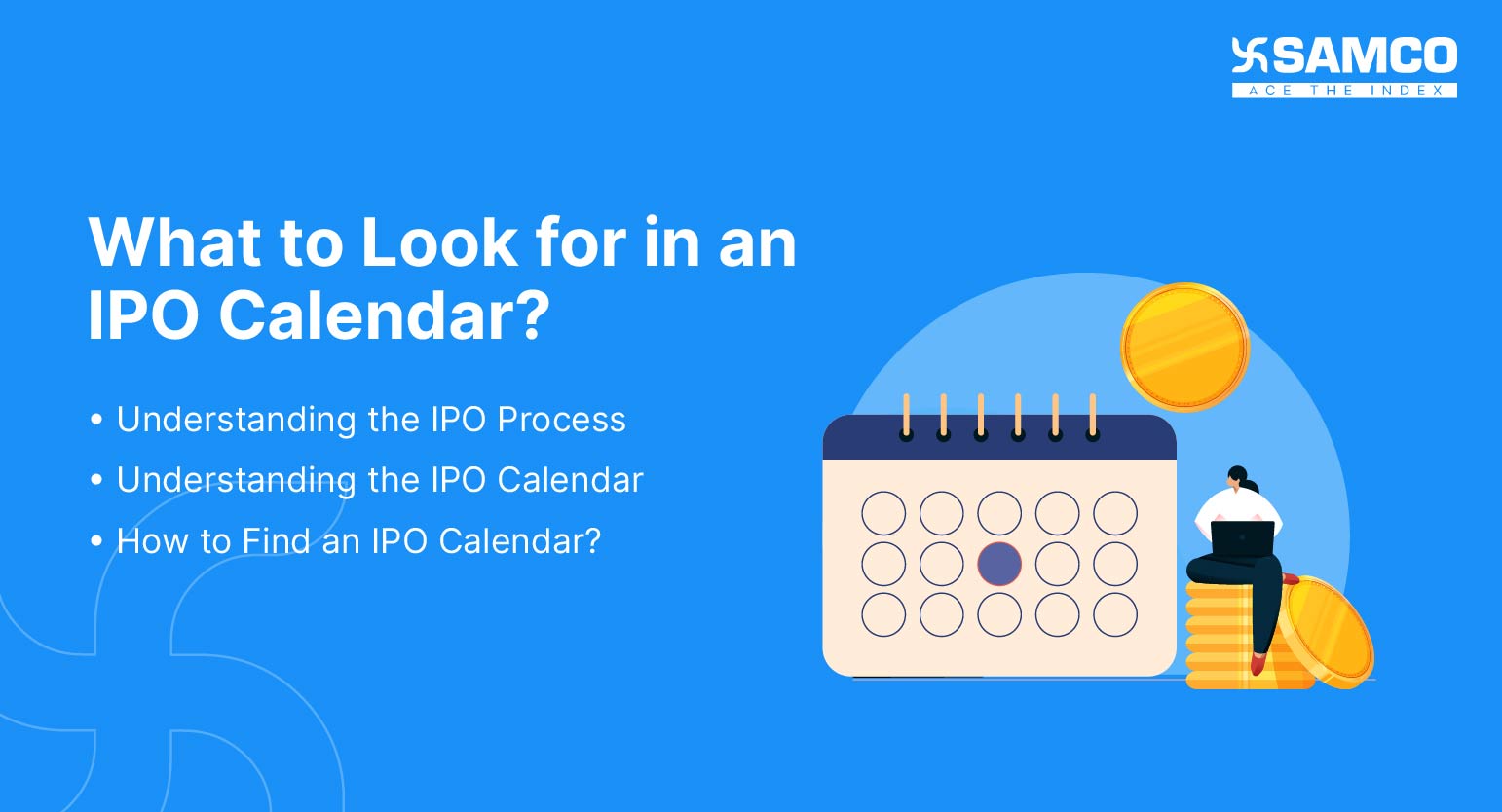In this article, we will discuss
- Understanding the IPO Process
- Role of SEBI in IPO Process
- Compliance Requirements for Companies
- Understanding the IPO Calendar
- How to Find an IPO Calendar?
- Factors to Consider When Looking at an IPO Calendar
- IPO Performance Tracking
 Initial Public Offerings (IPOs) have become a popular investment avenue for many Indian investors in recent years. With the Indian economy growing and the stock market performing well, many companies are seeking to go public and raise capital from the public markets. As a result, the number of IPOs in India has increased in recent years. Companies from various sectors, such as technology, healthcare, consumer goods, and finance, are going public.
The Securities and Exchange Board of India (SEBI) regulates the IPO process in India. SEBI makes sure that companies follow the necessary regulations. It provides investors with all the relevant information. The SEBI has also introduced various measures to promote transparency and protect investors' interests in the IPO process.
Yet, with the growing number of IPOs, it can be challenging for investors to decide which IPOs to invest in and which to avoid. This is where an IPO calendar comes in handy. An IPO calendar lists upcoming IPOs and their expected launch dates. This allows investors to plan their investment strategy and divide their funds.
Initial Public Offerings (IPOs) have become a popular investment avenue for many Indian investors in recent years. With the Indian economy growing and the stock market performing well, many companies are seeking to go public and raise capital from the public markets. As a result, the number of IPOs in India has increased in recent years. Companies from various sectors, such as technology, healthcare, consumer goods, and finance, are going public.
The Securities and Exchange Board of India (SEBI) regulates the IPO process in India. SEBI makes sure that companies follow the necessary regulations. It provides investors with all the relevant information. The SEBI has also introduced various measures to promote transparency and protect investors' interests in the IPO process.
Yet, with the growing number of IPOs, it can be challenging for investors to decide which IPOs to invest in and which to avoid. This is where an IPO calendar comes in handy. An IPO calendar lists upcoming IPOs and their expected launch dates. This allows investors to plan their investment strategy and divide their funds.
Understanding the IPO Process
Launching an IPO in India involves several steps and compliance requirements. These are overseen by the Securities and Exchange Board of India (SEBI). The following is a detailed explanation of the IPO process, the role of SEBI, and the compliance requirements for companies.Steps Involved in the IPO Process
-
Preparing for the IPO
-
Due Diligence
-
Filing the Draft Red Herring Prospectus (DRHP)
-
Obtaining SEBI Approval
-
Marketing and Roadshows
-
Price Determination
-
Allocation of Shares
-
Listing on the Stock Exchange
Role of SEBI in IPO Process
The SEBI plays a critical role in the IPO process in India. Its primary responsibilities include:-
Protecting Investor Interests
-
Regulating the IPO Process
-
Promoting Transparency
Compliance Requirements for Companies
Companies looking to launch an IPO in India must follow various regulations, including:-
Listing Agreement
-
Corporate Governance
-
Financial Reporting
-
Regulatory Compliance
Understanding the IPO Calendar
IPO calendar refers to a schedule of upcoming Initial Public Offerings (IPOs) expected to hit the market over a specific period. It provides investors with information about upcoming IPOs. It includes the expected date of the IPO, the expected price range of the shares, the IPO size, and other key details. The importance of the IPO calendar for investors lies in the fact that it helps them plan their investments in advance. It gives investors an overview of the companies planning to go public, allowing them to test the potential investment opportunities and make informed investment decisions. By following an IPO calendar, investors can track the progress of the IPO process. It includes all the details, including:- The filing of the prospectus
- The approval from the SEBI
- The eventual listing of the shares on the stock exchange.
How to Find an IPO Calendar?
There are several sources where investors can find IPO calendars in India. Some of the most common sources include:-
SEBI (Securities and Exchange Board of India)
-
Stock Exchanges
-
Financial News Websites
-
Brokers
-
Company Websites
Factors to Consider When Looking at an IPO Calendar
When evaluating an IPO calendar in India, there are several factors investors should consider before making an investment decision. These factors include:-
Company Background and Financials
-
Industry and Market Trends
-
Pricing and Valuation
-
Investor Sentiment and Demand
-
Competitive Landscape
-
Use of Proceeds
-
Underwriter Reputation
-
Regulatory Environment
-
Management Team



 Easy & quick
Easy & quick
Leave A Comment?